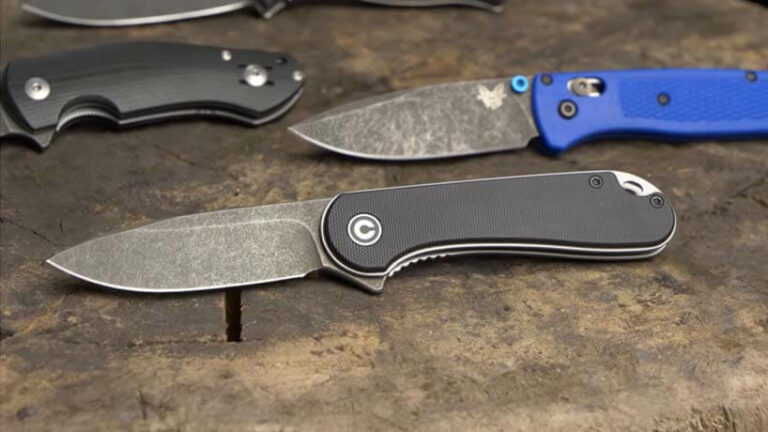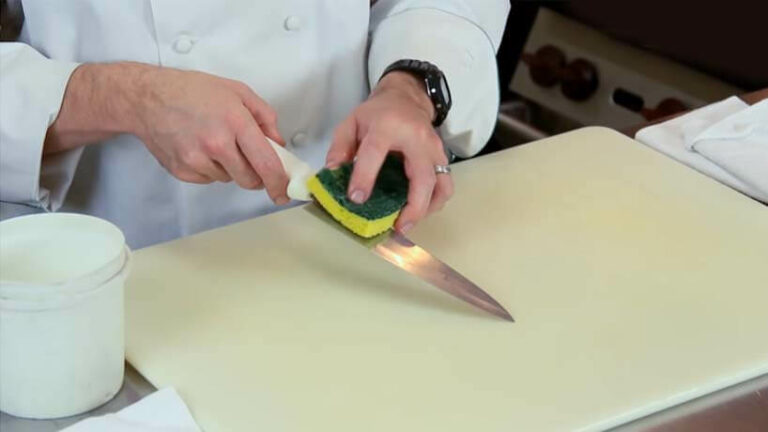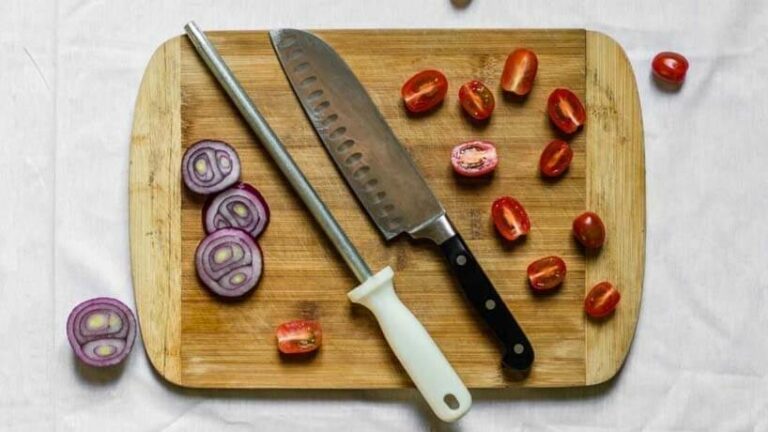Butterfly knives, otherwise known as Balisong knives, have a unique style built into their design. They have moving handles that allow the user to perform tricks when opening the butterfly knife. However, with all these moving parts comes a slight problem – the joints become loose over time. Just like anything that moves, services and repairs are unavoidable. The good thing is that this is a fairly easy process and won’t take you long at all. You’ll just need a couple of tools and a pretty steady hand to tighten a butterfly knife, the rest is history.
This Is Our 3 Step Guide on How to Tighten a Butterfly Knife
1. Preparation and Tools
The first thing you need to do is to open the knife fully and latch the handle lock. You don’t want the handles in the way when trying to work on the knife. The next thing that needs to be done is to identify whether you have butterfly knife screws or pins. No need to worry if you don’t know how to tighten balisong pivot pins, it’s not that difficult, but we’ll get to that. After you’ve figured out which type of pivot you have, you’re going to get the necessary tools.
For pins, you’ll probably want to use a vice if you have, if not then a small hammer will do. For screws, you’ll need either Allen keys or a screwdriver. The smaller the hammer the better because you don’t want to apply too much force to the pins in case they get overtightened. Overly tight screws or pins means that the blade won’t rotate out of the handle making it difficult to perform tricks, or even open the butterfly knife.
2. Tighten the Joints Carefully

Remember that your goal is to tighten the screws or pins, not permanently fix the knife into one place. So we’re going to go through an easy process of lightly fixing the problem at hand. For a knife that has screws, you’re going to grab your screwdriver and press the tip onto the screw quite firmly. This is so that the handle of the knife starts to move up and into place because we want to make sure of the correct position first.
Once you’re satisfied that the handles are not wiggling around in the wrong place, you can go ahead and screw them in. Again, don’t tighten them too much, just until it offers resistance. After that’s done give it a test to see if the blade still moves freely and easily without interference from wiggling handles.
When tightening a butterfly knife that has pivot pins, you’re going to use a hammer to tap the pins into place. Over time the pins get loosened from constant movement and forces applied while in use. This is a simple fix but can easily be overdone, unlike the screws method where you have a lot more control.
Take a solid object like a brick or iron anvil and place the knife on top. Hold the knife with a strong grip and then lightly tap the pins with a single strike. You should do this for all the necessary pins and then test to see if it is functioning well enough. It’s easier to repeat the process twice than having to loosen the pins if you’ve over-tightened them. Learning how to loosen a butterfly knife is another thing altogether.
3. Using a Vice
There is another way that you can tighten your butterfly knife pivot pins and that’s by using a vice press. This method is much more accurate and allows you more control than using a hammer to beat the pins into position. You will start by opening the vice grip just enough to fit the knife thin-ways. Meaning that the pins are pointing toward the walls of the vice.
This is so that when the vice closes it will press against the pins and not any part of the handle or blade. You don’t want the vice to clamp down on the handle or blade because you can very easily danger those pieces. The method to follow will be holding the knife while it’s closed and latched against one side of the vice. Preferably the side that doesn’t move because you are going for maximum accuracy. Then slowly using your free hand close the vice until it makes contact with the pins.
At this point, you will stop to make sure that the knife is perfectly aligned with the sides of the vice grip. We don’t want the pins being pressed together at an angle. Once you’re confident that it’s aligned you can proceed to slowly compress the pins into place. This happens a lot quicker than you might think so take care and apply limited pressure to the torque wheel of the vice.
Conclusion
This is more of a delicate problem than anything else which is something that many people forget. Easy does it, fits the description. It also may be of use to note that you shouldn’t wait too long to tighten the pins or screws. Waiting too long will make the task more complicated and could also mean that there’s more of a chance that you’ll mess it up. When the blade flies out of the handle and all you’ve got left are the handles then you’re too late.
Do a little more research if you’re not confident enough yet to do it yourself but remember that all you have to do is to take it slowly. The smaller the adjustments the better. Knife professionals can also help you out but be warned that for a simple procedure of tightening butterfly knives they may charge quite a bit of dough. Hopefully, your butterfly knife will be up and running and good as new soon.







